Programs

Our Principle
Montessori Programs
“Our principle concern must be to educate humanity – the human beings of all nations – in order to guide it toward seeking common goals. We must turn back and make the child our principal concern. The efforts of science must be concentrated on him, because he is the source of and the key to the riddles of humanity.” (Education and Peace)
Montessori Programs
A Prepared Adult – knowledgeable of the developmental stage of the children, young adults, and adults that they are interacting with.
A Prepared Environment – beautiful, ordered, and designed for multi-age groupings, containing activities that respond to the specific needs of the age group. The prepared environment encompasses both internal and external spaces. In these circumstances children, young adults, and adults find what is necessary for their individual development whilst gaining real life experiences of what it means to live a fulfilled life in the company of others; of what it means to exercise freedom of choice whilst also taking responsibility for the impact of their actions on the well-being of the community they live in and the earth that they live on.

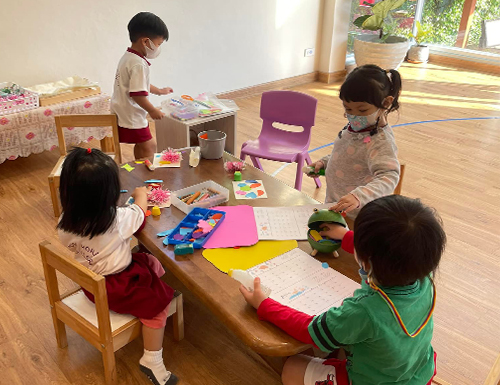
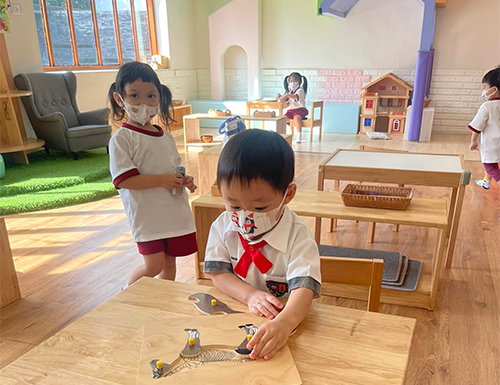
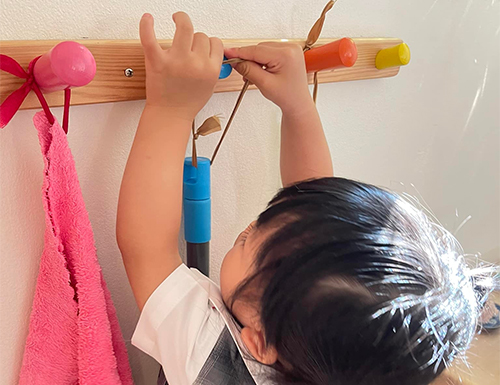
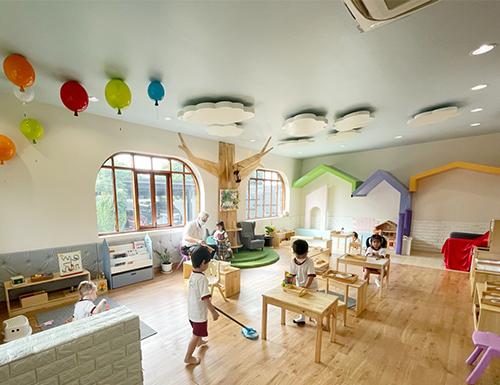
Age 0-3 years
Toddler
The first three years of life are the most fundamental in the development of human beings and their potential. It is a period when the core of personality, social skills, and human values are developed. An understanding of the child’s development allows Montessori environments to meet the needs of the infant and foster a sense of belonging, independence, and language acquisition enabling children to feel able and capable.
Toddler Communities : our Environments provided for children from approximately two to three years that focus on developing movement, language, and independence within a social context.
Age 3-6 years
Casa
Between the ages of 3 and 6, Maria Montessori called this environment Casa dei Bambini (Children’s House). Having created the foundations of their personality, three-year-old children arrive in the prepared environment ready to develop and perfect their abilities. They learn best through real-life activities that support independence and self-efficacy; manipulation of objects to provide concrete sensorial experience; and open-ended exploration leading to the refinement of their movements, sensory perceptions, language and the development of their intellect.
All members of this expanded community of 3 to 6-year-olds thrive through opportunities to follow their own interest, freely choose their own activities, develop their capacity for concentration, and engage at their own pace their emerging powers of reason, imagination, and sociability.
Materials and activities are designed to support self-directed discovery and learning, and so are a perfect match for this developmental stage. They are organized around Practical Life activities that develop both independence and social skills; Sensorial activities that refine sensory perception; the development of Spoken Language, Writing and Reading skills; and Mathematical activities that develop fundamental mathematical concepts; as well as activities that reflect upon our human understanding of geography, history, biology, science, music, and the arts. The trained adult guides the children along this journey, helping them become well-adapted individuals, ready to take a positive, pro-social place in their world.
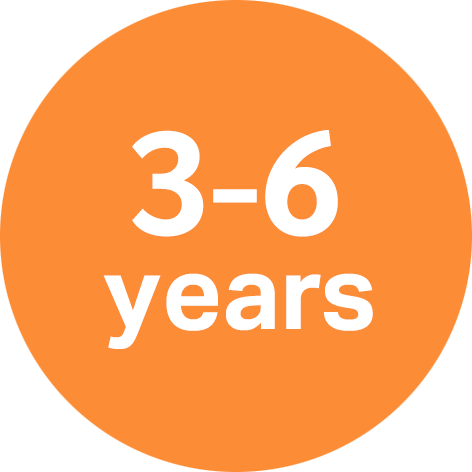
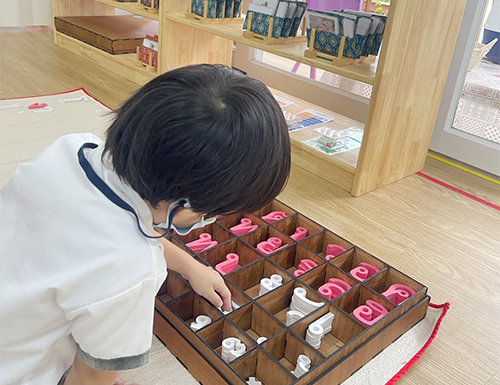
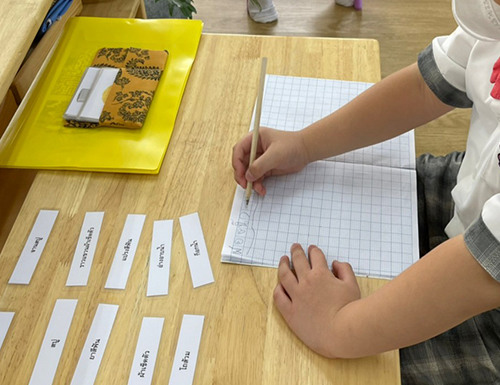
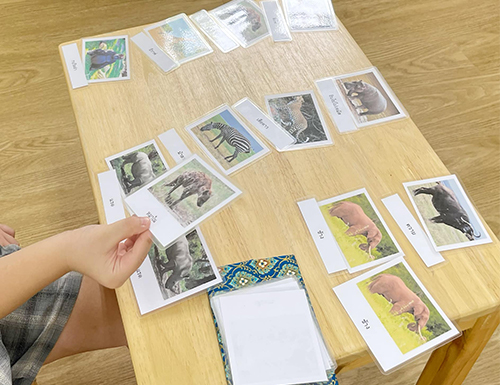
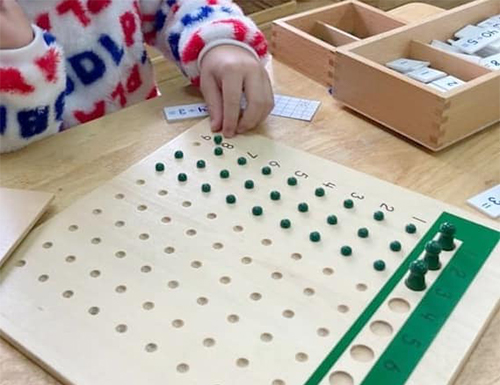
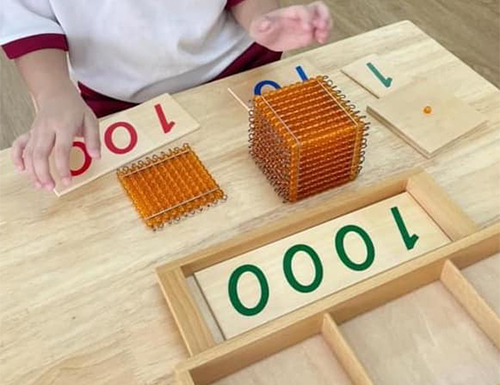
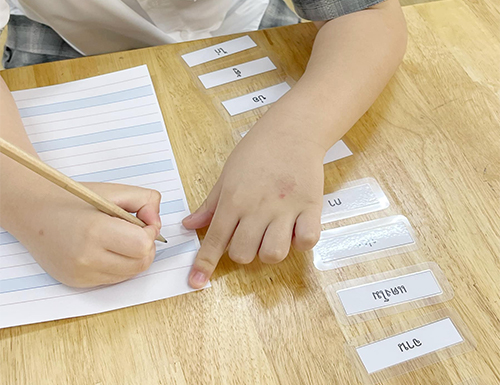
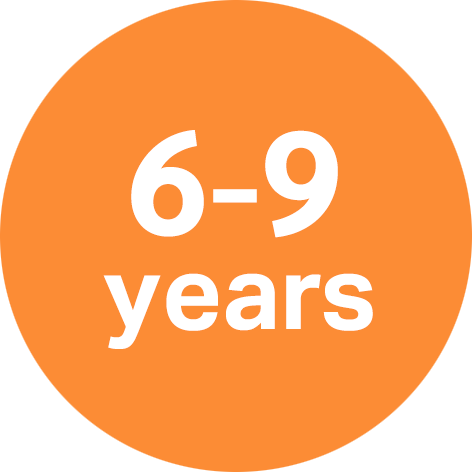
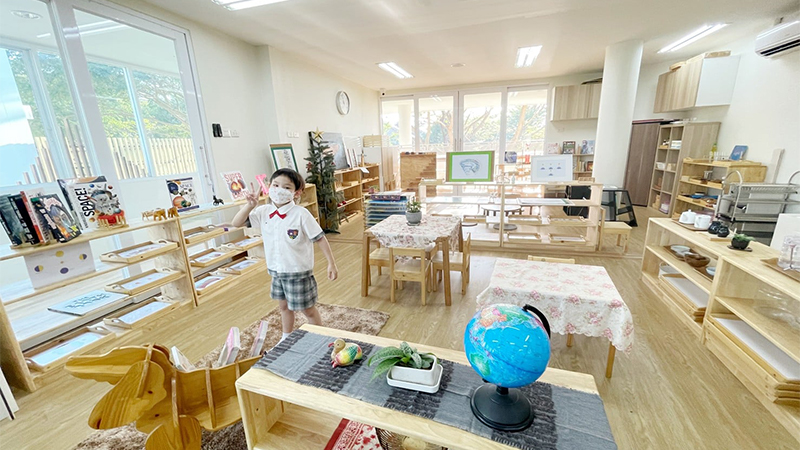
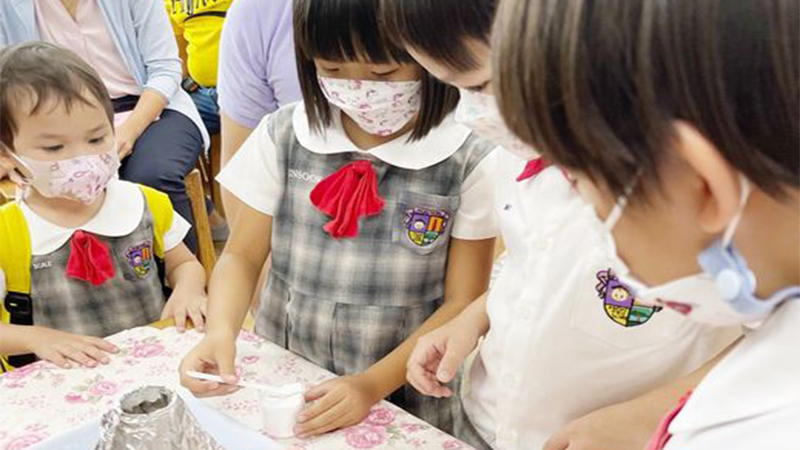
Age 6-9 years
Lower Elementary
Elementary aged children typically can be characterised by their curious minds, their ability to abstract and imagine, their moral and social orientation and their energy for research and exploration. Elementary children work in small, mixed-age groups on a variety of projects which spark the imagination, engage the intellect, and develop their reasoning abilities.
Elementary studies build knowledge through an in-depth study of the world and how it works. Studies are integrated across disciplines that include geography, biology, history, language, mathematics, science, music, and other forms of artistic expression. Exploration of each area is augmented by the children, who organise visits beyond the confines of the classroom to gain real-life knowledge from community resources, such as the library, planetarium, botanical garden, science centre, factory, hospital, etc. This approach fosters a feeling of connectedness to humanity and encourages children’s natural desire to make a contribution to the world.
The elementary school environment is for children ages 6 through 12. Sometimes the children are divided into two groups of 6 to 9 and 9 to 12 and sometimes all six years interact in one environment.
Environment
Montessori Environment
Montessori educational environments are carefully prepared for child-centered learning.
The Montessori environment:
- Is organised to support the developmental characteristics and interests of a mixed age group within an identified range;
- Promotes lively and purposeful engagement in both indoor and outdoor settings;
- Can be adapted to any culture or setting; and,
- Thrives through the trained adult’s careful observation of both universal and individual needs as revealed by each unique learner.
The visible environment includes accessible furniture, a variety of work spaces, and scientifically designed materials displayed for free choice of activity. These materials support concrete exploration which leads to both practical skills and abstract knowledge. Such exploration is initiated through minimalist lessons offered by the trained Montessori teacher followed by hands-on, self-directed, and self-correcting learning which can be individual, collaborative, or peer-to-peer.
The absence of an imposed daily schedule and incorporation of logical limits to activity create an environment that supports independence, confidence, self-discipline, mutual respect, social connection, and stewardship of the environment. The outcome is a vibrant learning community, characterised by positive behavioural, moral, and emotional development as well as solid cognitive achievements.
In the 3-6 environment, there are 4 main areas as following;

Practical Life
Practical Life is the basic activity that can find in daily life. This type of activity help child refine movement, built equilibrium, Orders, Concentration and become independent. Learning work-cycle this is key to proceed to other area. Practical life divided to 5 group
- Preliminary Exercises
- Care of Person
- Care of Environment
- Grace and Courtesy
- Control of Movement

Sensorial
Dr.Maria Montessori described the sensorial materials as the “key to the world”. The senses, being explorers of the world, open the way to knowledge. The quality of our senses not only helps us to orientate us to the world around, but also is a tool to aide us in building our knowledge. The development of the child’s senses is a natural process in which we, as educators, can help enrich its development. Sensorial material help child build intelligence by pairing, sorting and grading give opportunity to exercise their discrimination powers. The Sensorial area is divided into six categories
- Visual Sense
- Tactile Sense
- Auditory Sense
- Olfactory Sense
- Gustatory Sense

Language
Language area is to give children ways to describe and to interact with their environment. Sensitive period and Absorbent Mind work together develop child language skills interactions with other people in environment. Language build child self-confidence, able to communication their feelings and love of writing and reading. Language area divided to 4 group
- Spoken/Oral Language
- Written Language
- Mechanical Reading
- Reading Classification
- Comprehensive Reading

Montessori math materials
Montessori math materials help children approach math with hands-on, visual, and physical learning aids. These materials allow students to attach concrete knowledge to the often abstract concepts in math. As children progress through the Montessori math framework, the materials become more abstract, as students internalize more of the knowledge scaffolded by the materials. Mathematic divided in 5 groups
- Number 1-10 and 0
- Decimal System
- Continuation of Counting
- Memorization Work
- Passage to Abstraction
